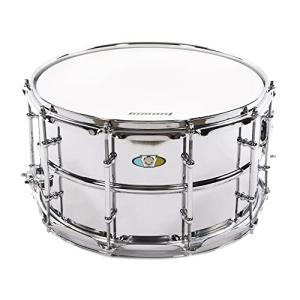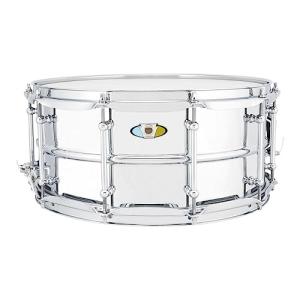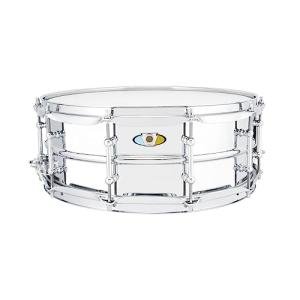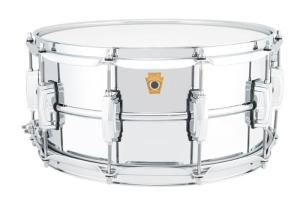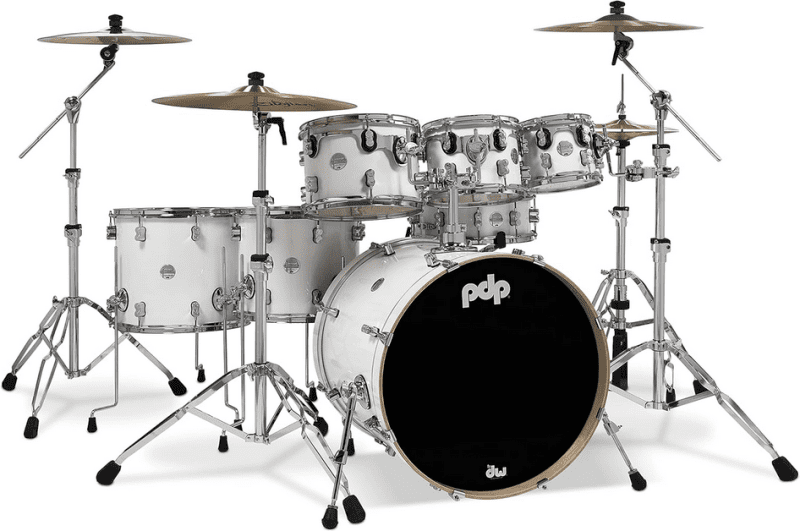Playing drums in a percussion ensemble can be an exciting and rewarding experience. Whether you're a seasoned drummer or just starting, it’s important to know some key techniques and approaches.
Counting your rests and coming in on time is crucial for maintaining the ensemble’s rhythm and flow.

Pay attention to the sound you are producing. Listening closely helps you blend with other instruments like vibes and marimbas, which can easily get lost in a large group.
Make sure to play in the correct zones on each drum and keep your wrists relaxed to improve your technique and sound quality.
To prepare for a performance, practice is essential.
Work on exercises that focus on limb independence and playing different rhythms with each hand and foot. This will build your confidence and ensure you are ready to contribute to the overall composition of the ensemble.
Key Takeaways
- Practice counting your rests and coming in on time.
- Focus on listening to your sound and playing techniques.
- Work on exercises for limb independence to prepare for performances.
Understanding Percussion Ensembles
Percussion ensembles are groups that consist only of percussion instruments. These ensembles focus on rhythm and can range from small groups to larger ones. You can find them in various settings, from classical music to indoor drumlines.
Types of Percussion Ensembles
Many types of percussion ensembles exist.
Classical percussion ensembles often perform in orchestras and wind ensembles, emphasizing traditional percussion instruments. A common example is the percussion orchestra, which features multiple percussion instruments played by both soloists and group members.
Indoor drumlines are another type. These ensembles often perform in competitive settings, combining marching percussion with theatrical elements.
Ethnic percussion ensembles focus on traditional music from specific cultures, such as Taiwanese drum ensembles or Carnatic ensembles.
Roles and Functions Within the Ensemble
In a percussion ensemble, each member has a specific role.
Rhythm keepers use instruments like bass drums or snare drums to maintain the beat. They provide the steady pulse that guides the rest of the group.
Melodic percussionists play instruments like xylophones or marimbas. These instruments can produce melodies and harmonies, adding depth to the music.
Another role is the accent player, who uses cymbals, triangles, or other instruments to create dynamics and emphasis within the piece.
Common Percussion Instruments
Several percussion instruments are common in these ensembles.
Drums like snare drums, bass drums, and tom-toms are fundamental. They produce the basic rhythms and beats.
Keyboard percussion instruments include xylophones, marimbas, and vibraphones. These instruments have tuned keys that create melodies and harmonies.
Auxiliary percussion instruments like triangles, tambourines, and cymbals add texture and variety to the music.
Other instruments often found are hand drums like congas and bongos, which come from different musical traditions and add unique sounds to the ensemble.
Fundamentals of Drumming Technique
Learning proper drumming techniques is essential for playing with precision, maintaining rhythm, and achieving a wide range of dynamics on your drum.
Focus on sticking and hand techniques, foot techniques and pedal use, rhythmic precision and timing, and dynamics and articulation.
Sticking and Hand Techniques
Using the right sticking techniques ensures smooth, controlled drumming.
For matched grip, hold both sticks with palms facing down. Place the stick between your thumb and index finger, allowing it to rest on the first joint of your middle finger.
For traditional grip, the left hand holds the stick with the palm facing upward. Keep your grip firm but relaxed to prevent tension.
Incorporate ghost notes, which are light taps on the drum, to add low-volume texture.
Accent notes where needed by using more force to create louder beats. Practice wrist control to maintain a consistent sound and avoid strain.
Foot Techniques and Pedal Use
Foot techniques are crucial for playing bass drums and hi-hat cymbals.
When using the bass drum pedal, keep your heel down to maintain control or lift it up for more power, known as heel-toe.
For the hi-hat pedal, mastering heel-up and heel-down techniques is important.
Heel-down allows for quiet, controlled playing, while heel-up gives louder, dynamic sounds.
Practice coordinating your feet with your hands to maintain even rhythms. Work on smooth pedal transitions to avoid abrupt changes in volume.
Your feet should move smoothly and be relaxed to ensure consistent sound production.
Rhythmic Precision and Timing
Maintaining good rhythm and timing is vital in any percussion ensemble.
Use a metronome during practice to develop a strong sense of timing.
Break down complex rhythms into smaller parts to manage them better.
Focus on internalizing different time signatures and beats to become versatile.
Playing with consistent tempo helps the ensemble stay together.
Listen to the pulse of the music and lock in with the other percussionists. Counting out loud can also help in managing difficult passages and maintaining accuracy.
Dynamics and Articulation
Mastering dynamics involves controlling the volume and intensity of your playing.
Use different techniques to create soft (piano) or loud (forte) sounds. Practice playing at various dynamics to build control.
Articulation refers to how notes are played and connected.
For example, playing staccato notes will give you short, distinct sounds, while legato playing produces smoother transitions.
Experiment with accenting specific beats to add emphasis.
Use a mix of soft ghost notes and harder accent notes to create a rich dynamic range. This contrast can make your drumming more expressive and engaging.
Integration and Ensemble Play

Playing drums in a percussion ensemble requires blending your sound with others, collaborating with melodic instruments, and adapting to various musical genres.
Mastering these aspects ensures a cohesive performance and enhances the overall musical experience.
Blending With Other Percussive Voices
In a percussion ensemble, blending your sound with others is crucial.
You need to listen actively to the different textures and tones produced by instruments like snare drums, bass drums, cymbals, and timpani.
Vibes and marimbas often get lost in the overall texture, so be aware of your volume and touch.
Always count your rests and come in on time. This keeps the ensemble tight and prevents unplanned sounds.
Pay attention to the composer's dynamics and the conductor's cues.
Adjust your playing techniques—whether you're striking softly with a mallet or hitting firmly with a stick—to match the group.
Collaboration With Melodic Instruments
Collaboration with melodic instruments like xylophones, bells, and marimbas is vital for a balanced sound. These instruments add melody and harmony to the ensemble's rhythmic foundation.
Make sure you are in sync with them to create a cohesive composition.
Communicate with players of melodic instruments about dynamics and tempo.
Your role often supports their melodies, so careful coordination is needed.
Follow the conductor closely to ensure that transitions and musical phrases are executed smoothly.
This collaboration enriches the ensemble and enhances the audience's experience.
Adapting to Various Musical Genres
Adaptability is key when playing drums in different musical genres.
Percussion ensembles often perform a wide range of styles, from classical to jazz and even world music. Each genre demands unique playing techniques and approaches.
For example, in a jazz ensemble, incorporating drum set and hand drums like congas may be necessary.
Understand the rhythmic patterns and textures that define each style.
Always be ready to switch techniques based on the musical genre.
This versatility not only broadens your skill set but also makes you a valuable ensemble member.
Preparing for a Percussion Ensemble Performance

Getting ready for a percussion ensemble performance involves a mix of focused rehearsals, careful stage setup, and proper performance etiquette.
Paying attention to these areas will improve your overall performance and ensure a polished presentation.
Rehearsal Strategies
Consistency in practice is key to building confidence.
Schedule regular rehearsals to master techniques and compositions.
Break pieces into smaller sections and focus on challenging parts.
Utilize a metronome to maintain tempo and ensure synchronization among the group.
Encourage open communication between musicians and the conductor.
Discuss any difficulties with techniques or sections of the music.
Additionally, record rehearsals to pinpoint areas needing improvement. Practice dynamics and transitions carefully.
Team up players in different pairs to foster a sense of unity and familiarity with their parts.
Knowing every role aids in musical cohesion during the performance.
Stage Placement and Setup
Setting up the stage correctly impacts your performance.
Arrange instruments considering the ease of movement and sound balance.
Place larger instruments like the bass drum and marimba at the back. Smaller instruments should be near the front for visibility and access.
Music stands should be positioned to avoid blocking sightlines between the musicians and the conductor.
Label each stand with the musician's part to avoid confusion.
Plan precise locations for each player and include this in the stage setup diagram.
Ensure the stage has adequate lighting, especially for reading music.
Test the setup during a dress rehearsal, making necessary adjustments to instrument and musician placement.
Performance Etiquette
Performance etiquette starts before you step on stage.
Dress appropriately, usually in concert black, and arrive early to set up your space calmly.
Warm-up individually and as a group to ensure everyone is focused.
During the performance, maintain eye contact with the conductor to stay in sync.
Remember to adapt to any minor adjustments during the performance.
Silent communication, like nods or eye contact, helps keep the ensemble together.
Respect the audience and your fellow musicians by minimizing unnecessary movement and noise.
Wait until the piece is over to adjust instruments or music stands.
Advancing Your Percussion Skills
To become a better percussionist, you need to explore advanced techniques, incorporate improvisation, and learn from master percussion composers and musicians.
Focus on expanding your skill set and knowledge in various ways.
Exploring Advanced Techniques and Genres
Trying out new styles and complex techniques can keep your percussion skills fresh.
Practice methods like rudiments, polyrhythms, and dynamic control. These help you play complex rhythms with more accuracy.
Explore genres like jazz, classical, and gamelan.
Each genre brings unique rhythms and playing methods. Gamelan, in particular, offers a different tuning system and interlocking patterns, which can sharpen your timing and coordination.
By broadening your musical horizons, your overall musicianship improves.
Incorporating Improvisation and Soloing
Improvisation can add creativity and depth to your playing.
Practice soloing over different types of music to develop your ear and reflexes. Start by focusing on simple rhythms and gradually incorporate more complex patterns and dynamics.
Engaging in percussion play with other musicians allows you to react in real-time, enhancing your musical conversation.
Being comfortable with improvisation not only makes you a more adaptable musician but also boosts your confidence.
Learning From Master Percussion Composers and Musicians
Study the works of renowned percussion composers like Steve Reich, John Cage, and Lou Harrison.
Their compositions often include unconventional instruments and techniques, providing unique learning opportunities.
Watch and listen to great percussionists.
Musicians like Evelyn Glennie and Giovanni Hidalgo offer valuable insights through their performances and wisdom.
Analyzing their methods and applying their practices to your own routines can significantly elevate your skills.
Frequently Asked Questions
Playing drums in a percussion ensemble involves understanding key fundamentals, mastering specific techniques, and dealing with unique challenges. It also requires incorporating dynamics and being well-organized.
What are the fundamentals of playing drums in a percussion ensemble?
You need to learn how to read music. This includes understanding different rhythms, note values, and symbols.
You must also listen carefully to other players to blend smoothly with the ensemble.
What techniques should a drummer master for ensemble performances?
Focus on learning rudiments.
These are basic patterns like single strokes, double strokes, and paradiddles that form the foundation of drumming.
Tuning your drums correctly is essential for achieving the right sound.
How does one incorporate dynamics while playing drums in a group setting?
Dynamics involve playing at various volume levels.
You must practice playing softly and loudly to match the ensemble’s needs.
Listen to the conductor and your fellow musicians for cues on when to change dynamics.
What unique challenges do drummers face when joining a percussion ensemble?
One challenge is keeping time.
You need to be the clock for the group, ensuring everyone stays in sync.
Another challenge is playing different percussion instruments like the marimba or timpani, which require different skills.
What are some tips for beginners starting out in a percussion ensemble?
Start with the basics.
Focus on learning simple rhythms and gradually progress to more complex patterns.
Practice regularly and pay attention to your teacher or conductor’s feedback.
How can a percussion ensemble be effectively organized and started?
Assign roles to each member, such as who will play which instrument. This helps avoid confusion and ensures everyone knows their part.
Rehearse regularly. Set clear goals for each practice session to track progress.
